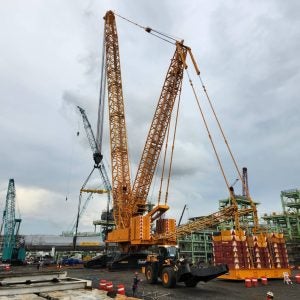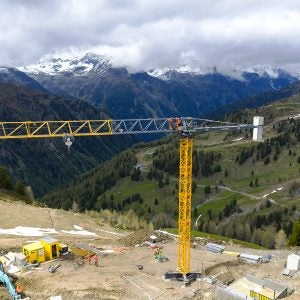The Spanish crane and heavy transport company Transbiaga is using three new Liebherr LG 1750 lattice boom mobile cranes for lifting at the Gecama wind farm in the province of Cuenca. 67 wind turbines with a hub height of 120 metres are being erected to feed energy into the national power grid.
The components of the concrete towers weigh up to 255 tonnes. The nacelle, including the generator, weighs 140 tonnes. The rotor blades weigh 21 tonnes apiece and are 74 metres long. "In addition to our three new LG 1750s, we are also using an LG 1750 from Grúas Ibarrondo, our partner in this wind project," says Jon Usabiaga, CEO of Transbiaga.
Transbiaga is very familiar with the Liebherr LG 1750 lattice boom mobile crane, as the company already has five other units in its fleet. "We chose this crane model because of its high load capacity and mobility, which are factors that meet the needs and requirements of a wind farm. We bought the new equipment with the even stronger SX boom system. This means we are also well positioned for the future generation of wind turbines," he says. The cranes are configured with 165-metre main boom and F-jib.
"We use Liebherr LG 1750s as main cranes for wind farm assembly. They are particularly well suited to work in wind farms, as they can travel independently on the paths between each turbine. They have a smaller width than a crawler crane." Transbiaga focuses its work mainly on the assembly of wind farms in Europe and Latin America. To be able to carry out this type of project, the company also has eight Liebherr LR 1600/2W narrow track crawler cranes, which is also well suited for driving on narrow tracks in wind farms.
The construction of this wind farm is part of a series that Transbiaga has been carrying out. The Gecama wind farm is the largest in Spain to be built in a single phase. It will cover an area of 41 km2 and have almost 80 km of road network. It will have an installed capacity of more than 300 MW, generate around 1,000 gigawatt hours per year and save 160,000 tonnes of CO2 emissions.






